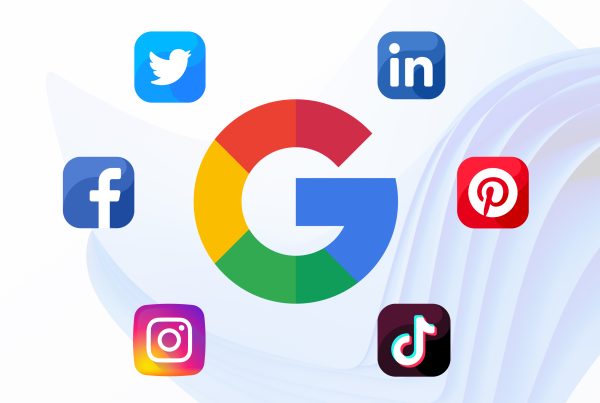Table of Contents
This is an era of advertising and one of the best way to go around it is by leveraging user generated content. Brands left and right hold seminars and conferences on how to break through the clutter and entice new customers and clients to open up their wallets and spend to their heart’s content. Unfortunately, this is much easier said than done. Marketing efforts are so ubiquitous as to become invisible to most of the intentionally dissonant public at large. People are adapting to become less susceptible to advertising efforts. However, the silver lining in all this is that it paves a new way for brands to build a rapport with their users. One on one interaction and conversation. Of course, “one on one” in this case isn’t quite as intimate as it used to be. Rather, your brand conversations can be used to reach millions. And how so? Through the use of user generated content (UGC).
UGC is a way to start a conversation with your fans, and more importantly, to cultivate a relationship between said fan and your brand. The implications of developing close ties with customers are staggering.
- 71% of American consumers rely on UGC such as ratings and reviews to help them make a purchasing decision.
- According to a Facebook case study, advertisements using ratings or reviews garnered more than 4 times the clickthrough rate of ads lacking UGC.
- UGC gets 10 times the views that brand produced promotional material on YouTube receives.
But before you can truly learn to leverage user generated content, you have to know exactly what it is.
What User Generated Content Is And Isn’t
This should seem fairly simple, but as we’ll see in the examples section, the lines can get pretty blurry. Let’s try to stick to as uncomplicated a definition as we can. User Generated Content is basically anything created by a brand’s users:
-
-
- Reviews
- Ratings
- Blog comments
- How to videos
-
…and so on. What it isn’t? Anything created and distributed by the brand:
-
-
- Product descriptions
- Blog posts
- Promotional videos
- Landing pages
-
…and etc. So where does the line blur? How about a landing page featuring a user rating? Or a brand that shares a user’s review of their product? Which category do these fall under? Either way it’s positive press, so the point should always be to promote the production and distribution of any noise that’s mentioning your brand in a favorable light.
But why is this any more important than your conventional and traditional marketing efforts? Why should you care about the implications and effects of your user’s content?
Why User Generated Content Is Important
Firstly, it’s important to remember that potential customers trust other users far more than they trust you. Of course, you’re going to say your product or service is the best and the coolest. That’s your job. What’s more powerful is seeing someone who isn’t incentivized pony out the same praise. Beyond this simple maxim, UGC also offers an avenue for users to interact with brands.
Interaction equals engagement and the more your users are engaged with your offerings, the more brand loyalty you will inspire. After all, you wouldn’t write a review for something you don’t care about. Moreover, you don’t cultivate relationships by being a complicit, silent partner. That’s not how relationships work. They’re a two way street.
You have to mix it up with your fans in order to keep them. And doing so provides you with the opportunity to make more fans, through little effort of your own. This is because UGC often has the potential to go viral. For example, the SMM experts at Taco Bell will often participate in a bit of back and forth with their fans:
Now here’s a shocker, I didn’t grab that screenshot off of Twitter. This was a humorous repost that I got off of the viral image sharing site, Imgur. And not because the Taco Bell folks have an account on the site. Rather, it became popular and started circulating. This example shows that Taco Bell is a self-aware, relatable and overall likable entity on the web. It’s positive branding, even if it doesn’t have a direct measurable effect on their business goals, it increases notoriety and recognition.
But that’s not all that UGC is good for. It’s also an integral part of the inbound marketing cycle. Interactive brand content allows users to attract new users, convert new users into new customers, convert new customers into repeat customers, and delight them enough to where they begin creating more UGC to start the process all over again.
User Generated Content Is Self-Sustaining Advertising.
UGC adds to brand authority, credibility, and trust. As mentioned above, users trust other users more than they do brands. If you have a loyal fan base that’s singing your brand’s praises, it increases the likelihood that other leads will convert to your cause.
Image credit: Forester Consulting
These stats show that consumers don’t trust brands, they trust other consumers. That’s why it’s always important to put your best foot forward in any interactions between staff and user, as we’ll see in some of our UGC examples below
Examples Of UGC Gone Amazingly Wright
You never know what interactions might be repackaged as UGC. That’s why it always pays to be personable, entertaining, and even a little quirky in your interactions with consumers. Netflix managed to do this in a fortuitously humorous way with a Reddit poster, who took a lighthearted exchange with their support team, screenshotted it and put it up on the front page of the internet.
Another example of UGC that worked out to the brand’s benefit can be seen in the Lego Creation Gallery
Image credit: Lego.com
This is a program created by the Lego marketing geniuses that allows users to build Lego models and share images of their work online. Lego further encourages users to submit according to certain rules and challenges in order to promote brand partnerships they have with Disney properties like Marvel studios and Star Wars film franchises. It also helps them show off new merchandise with sales funnels that are surreptitiously attached to certain pages in the gallery.
Examples Of UGC Gone Horribly Wrong
We won’t spend too much time on this category as it should be pretty obvious that you’re not supposed to treat your customers like dirt. However, it is important to note the high profile examples of a brand being careless with its supporters. In an age of oversharing, even the smallest missteps can end up with a million+ views.
Image credit: Twitter
Oh Skip… You can’t be your own biggest fan. See, this makes everyone look bad. Skip Bayless looks desperate and cringe-worthy. FS1 looks bad for giving him a vehicle. Shannon Sharpe looks bad for being associated with him. It’s just bad. It’s off-putting to fans of the network, and what’s worse is it’s a continual source of embarrassment for everyone involved because the story has legs. It serves as a continuing reminder that the internet never forgets and very rarely forgives.
Furthermore, this illustrates an important point: don’t try to produce your own user generated content! It’s unethical, often transparent, and generally makes the world a harder place to live in. It’s difficult enough without dishonest branding efforts. Let your product or service stand on its own merits and leave the UGC to the users.
One more example of lousy luck with UGC is another one that’s pretty easy to avoid: theft of intellectual property. Recently, the fashion retailer, Zara, has come under fire in the news for ripping off more than a dozen independent artists by blatantly copying their designs.
The big takeaway here? Promoting user generated content is not the same as taking credit and profiting off of user generated content. Always give credit where it’s due, and don’t be afraid to give back to your community when they provide you with value. You can do this by offering discounts or prizes in exchange for content; or, if you’re going to use an artist’s design in your clothing line, you could even do something radical—like pay them for their work.
And that brings us to an interesting question, how do we measure the exact value of a user’s content contribution?
The Trouble With UGC
In a nutshell, UGC can be very difficult to measure. Which metrics should you use? Likes, shares, comments, retweets, mentions and all the rest are a good start, but that’s generally how you measure your social media efforts, not the impact UGC has on your branding initiatives.
One way to measure impact is to a/b test exhaustively. Put out ads with and without user reviews included and see which ones drive more traffic to your site. You can also measure the number of positive reviews over different time periods and compare the results to conversion rates, bounce rates, and other metrics over the same intervals.
Taking actions like these allows you to measure customer conversations rather than just the numbers. If you monitor the chatter then you’ll start getting a better idea of what the overall feelings for your brand really are.
Beyond this, more careful measurement of UGC on business impact convinces senior level management of UGV value. Whereas it might otherwise be difficult to impress upon your organization’s leadership that they need to be funneling more budget dollars into a content marketing strategy, precise numerical proof of ROI will likely provide the impetus you need to begin leveraging UGC.
So what’s the best way to go about that exactly?
How To Leverage User Generated Content
Before anything else, you should have a benchmark in mind for what you want to accomplish you’re your UCG efforts. Make specific goals and take specific actions to elicit user responses throughout the customer life cycle. You can do things like:
- Develop shareable content in order to start a conversation
Start campaigns on YouTube, Instagram, Pinterest, or wherever your marketing powers are strongest. Encourage and entice users to share, comment, or otherwise interact with your content to create their own.
- If you’re selling products, prompt a customer to share their purchases on their social sites People love to show off their shiny new toys. Take advantage of this impulse.
- Encourage and promote UGC once it’s out there, distribute it through your social media and email marketing channels
Is there a positive review of your product or service on YouTube? Share that sucker and be sure to give the YouTuber credit, and a link back to their page.
- Feature user reviews in ads, product pages, and at checkout
It’s all about offering your customers that social proof. They’re looking for the approval of their peers, and more than anything they’re trying to avoid getting ripped off. You can circumvent this purchase anxiety by showing them they aren’t alone in their purchase decision.
- Crowd source your content through forums, how-to videos, FAQ answers, or even online Q and A sessions
Seeking out user interaction can be a powerful way to develop relationships. This can be something as simple as surveying your customers, or you can start an in depth discussion on your website through an open forum.
The Q and A sessions are a particularly valuable tool, as many celebrities have found out. Reddit’s AMAs have hosted everyone from scientists, athletes, and actors to popstars, porn stars, and entrepreneurs. These represent intimate and interesting opportunities to engage with your audience. And they can offer valuable insights based on the questions they ask.
One very important thing you can do is listen to what your critics are saying. Respond to user feedback and implement appropriate changes in later products or iterations. Let the conversation you’re having with your audience be truly two-way.
Nobody ever does everything right the first time. Don’t take criticism lightly. Even if it doesn’t seem constructive, you can take negativity and learn from it.
What other ways can you think of to engage, elicit, and otherwise interact with your users? Share your thoughts in the comments.
blog credits: Avex
This article was originally published in 3 April 2017. It was most recently updated in April 16, 2024 by Wise























